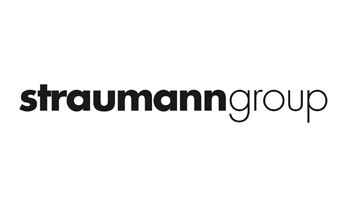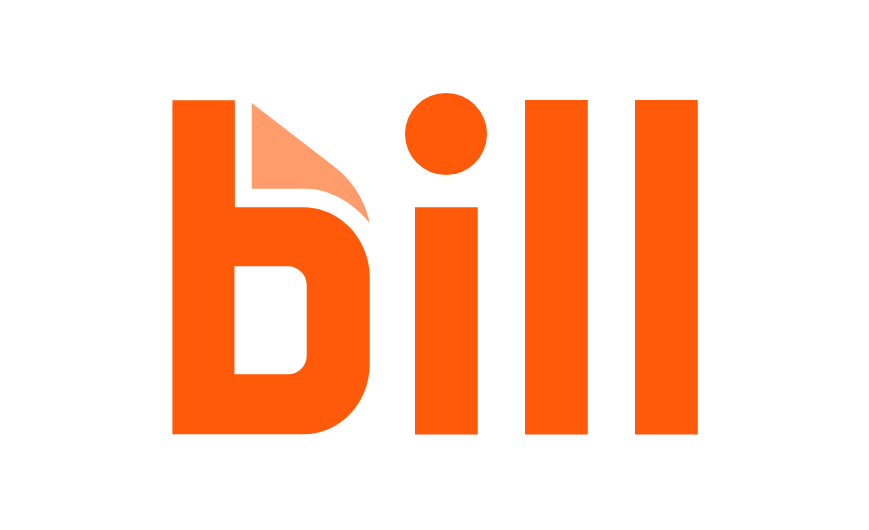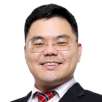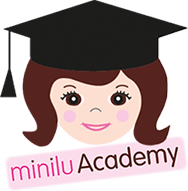The COVID-19 outbreak has certainly tested us all — our patience, our sanity and our preparation. We’ve been awarded (yes, we think it’s a good thing) more time to ourselves and our families. Additionally, it has forced us to reevaluate how we think, the way we do things and how we run our practices.
Let’s draw our attention to the last point, as this is precisely what will be either our best friend or our worst enemy when we return to “normalcy.” If you’re already truly efficient, congratulations. You are probably already doing a lot of the right things. If your days are busy but not productive, we’re here to help. Stop worrying and start planning.
First and foremost, it is crucial to maintain the safety of yourselves, your teams, patients and families. Following the guidelines of the CDC, OSHA and your state dental society will be imperative but can be done in a way that still allows you to run the office smoothly.
Our state dental society has not altered their recommendations from the aforementioned governing bodies, so we have created these guidelines in accordance with all three organizations.
Infection prevention will involve cleaning each dental unit with CaviCide after each appointment and before seating each patient. The office will be thoroughly cleaned daily. Every assistant who is seeing a patient will be wearing an FDA-approved N95 mask as well as goggles that completely shield the eyes, and all aerosol-generating procedures will be completed with high-volume suction.
In addition, we will maintain a six-foot distance between patients (and potentially one family member) at all times. The clinical chairs in our offices are currently six feet apart, but we have reserved the ability to see patients at every other chair in order to be absolutely sure we comply with social distancing throughout this time and limit the number of people in the office.
On days that allow, we will keep two offices open, utilizing both doctors. We have considered affixing plexiglass barriers to our front desk as well as obtaining floor markers with our logo to indicate a six-foot distance and will evaluate the requirements and practicality of fitting these into an office with a circular flow.
In an effort to keep the office as infection free as possible, patients will be instructed to check in from the parking lot. They will be instructed to fill out a COVID-19 questionnaire digitally from their phones. That information will go directly to a team member to review.
If there are no responses that indicate the patient is potentially contagious or currently infected, we will take their temperature before they enter the office. If the patient’s temperature is within normal limits, they will be welcomed into the lobby.
If any responses do indicate a risk to others or the patient presents with a fever, all non-emergent care will be delayed, and the patient will be instructed to seek the care of a physician. Proper precautions for these patients will be taken from there on a case by case basis.
We will limit those in the office to one family member per patient, mandatory hand washing will be required upon entering and patients will be instructed to brush before coming into the office as the toothbrush station will be closed. All chairs in the reception area will be set up minimally six feet from each other as well. Of course, we will always be applying the standard precautions we have in place as recommended by the ADA.
The real key to getting through this time smoothly is practicing efficiently. We mentioned earlier that if you already practice in a way that minimizes treatment time, appointments to finish treatment and doctor time at chairs, you’re on your way.
There are specific processes that we use to facilitate that consistently. At Kozlowski Orthodontics, we live by five basic rules to run an efficient practice:
- Expert doctor education and knowledge;
- A well-educated clinical team to assist in making decisions;
- Do as much as you can at every appointment, even when it’s not planned;
- Patient participation in treatment;
- And clinical photography, using it to understand your mechanics of outcomes and your decision making process.
In addition to those five tenets, we choose high-quality innovative products that position us for success. For the purposes of this discussion, we are going to focus on doctor education, doing as much as you can at every appointment and patient participation.
In our office, we use passive self-ligating Damon Q2 brackets, which provide low force, low friction for precise, reliable and efficient mechanics. The self-ligating door on Damon brackets eliminates the need for elastic ties, which helps improve hygiene and allows the wire to move freely within the bracket, prolonging its activity and decreasing the necessity for more frequent progress appointments in our practice.
We also use SmartArch™ wire technology, which is programmed to deliver ideal force to individual teeth in seven different force zones throughout the wire, equalizing pressure along the PDL while accounting for inter-bracket distance, root size and crown-to-root ratio. This wire, when selected appropriately, delivers sustained force over long periods of time and has the ability to reduce the wire sequence down to three wires, including a finishing wire. This allows us the ability to reduce the number of appointments to complete treatment.
While we use the best products, the most important step is making great clinical decisions. As we ease our way back into clinical practice, likely seeing less patient volume on a daily basis, we have a perfect opportunity to choose to do more at each visit. If you notice a bracket needs repositioning but you aren’t scheduled for a repositioning visit, do it anyway. If a patient comes in for an extra care visit with a bracket off and his or her next scheduled visit is within the next few weeks, turn that into the regular visit. If you weren’t planning on taking a patient’s braces off yet, but everything looks great and he or she is happy, do it that day.
Think of the now. It will pay off in the long run. Turning a 30-minute adjustment visit into an hour-long deband will save you an hour in your schedule within the next month where you can continue to make similar proactive decisions.
During this time, we have taken the opportunity to expand our virtual consults to virtual appointments, particularly with our Spark Clear Aligner patients. We have been using Spark since January of this year because of its high quality and patient satisfaction. Spark’s TruGEN material provides advanced force retention and better surface contact area vs. the leading aligner, which may result in more efficient tooth movement. This has allowed us to confidently complete aligner progress appointments through patient photo submissions and video calls.
Now, more than ever, this can help free up time in our practice to complete appointments that do require in-office visits. It allows us to treat patients who cannot come to the office, do not live locally or simply prefer the experience that way. Less appointments with the same excellent result are a recipe for satisfied patients and doctors.
The final point on efficiency throughout this transition is that of patient participation. This has always been an integral part of what we do and is a big reason why we are able to finish with an average treatment time of 18 months and 14 appointments. It is not enough to tell people to do something. You must explain why. Use your clinical photos to educate the patient (and parent if applicable) on where the occlusion started, how far it has come and why the elastics are necessary to get the result everyone has desired.
If this is done properly, there is no reason to see a patient back in four weeks just to “check elastics.” Provide the necessary education and incentive and wait eight, 10 or even 12 weeks to complete the next step, whether that is a wire change or a wire adjustment. Make progress at every appointment.
Some people will look at these last few months of office closure as a setback. We challenge you to look at it as an opportunity. As the famous Ryan Holiday would say, “The obstacle is the way.” This crisis has presented you with a chance to change your ways. You may not be able to see as many patients in the office, so you’ll have more time and you’ll have more opportunities. Seize them. Be more efficient by applying your expertise to situational demands, do everything you can at each appointment, use the highest quality materials, trust your mechanics, educate your team and your patients on the “why” behind their treatment, power through to the end of this uncertain time and maintain these practices.
Put an end to your unproductive days and watch your practice flourish while you spend more time doing other things you love. Everyone will be happier.
Tags:



 Austria / Österreich
Austria / Österreich
 Bosnia and Herzegovina / Босна и Херцеговина
Bosnia and Herzegovina / Босна и Херцеговина
 Bulgaria / България
Bulgaria / България
 Croatia / Hrvatska
Croatia / Hrvatska
 Czech Republic & Slovakia / Česká republika & Slovensko
Czech Republic & Slovakia / Česká republika & Slovensko
 Finland / Suomi
Finland / Suomi
 France / France
France / France
 Germany / Deutschland
Germany / Deutschland
 Greece / ΕΛΛΑΔΑ
Greece / ΕΛΛΑΔΑ
 Italy / Italia
Italy / Italia
 Netherlands / Nederland
Netherlands / Nederland
 Nordic / Nordic
Nordic / Nordic
 Poland / Polska
Poland / Polska
 Portugal / Portugal
Portugal / Portugal
 Romania & Moldova / România & Moldova
Romania & Moldova / România & Moldova
 Slovenia / Slovenija
Slovenia / Slovenija
 Serbia & Montenegro / Србија и Црна Гора
Serbia & Montenegro / Србија и Црна Гора
 Spain / España
Spain / España
 Switzerland / Schweiz
Switzerland / Schweiz
 Turkey / Türkiye
Turkey / Türkiye
 UK & Ireland / UK & Ireland
UK & Ireland / UK & Ireland
 International / International
International / International
 Brazil / Brasil
Brazil / Brasil
 Canada / Canada
Canada / Canada
 Latin America / Latinoamérica
Latin America / Latinoamérica
 China / 中国
China / 中国
 India / भारत गणराज्य
India / भारत गणराज्य
 Japan / 日本
Japan / 日本
 Pakistan / Pākistān
Pakistan / Pākistān
 Vietnam / Việt Nam
Vietnam / Việt Nam
 ASEAN / ASEAN
ASEAN / ASEAN
 Israel / מְדִינַת יִשְׂרָאֵל
Israel / מְדִינַת יִשְׂרָאֵל
 Algeria, Morocco & Tunisia / الجزائر والمغرب وتونس
Algeria, Morocco & Tunisia / الجزائر والمغرب وتونس
 Middle East / Middle East
Middle East / Middle East
:sharpen(level=0):output(format=jpeg)/up/dt/2024/04/Study-points-to-lack-of-formal-education-on-cannabis-in-dentistry.jpg)
:sharpen(level=0):output(format=jpeg)/up/dt/2024/04/Immediate-full-arch-zirconia-implant-therapy-utilising-the-power-of-robotic-assistance-and-digital-scanning_Fig-1-preophoto_title.jpg)
:sharpen(level=0):output(format=jpeg)/up/dt/2024/04/Lowcost-tooth-sensitivity-liquid-found-to-combat-caries-1.jpg)
:sharpen(level=0):output(format=jpeg)/up/dt/2024/04/DS-Academy-launches-Indirect-Restorative-Course-Series.jpg)
:sharpen(level=0):output(format=jpeg)/up/dt/2024/03/The-fight-continues-for-anaesthesia-safety-in-dentistry.jpg)











:sharpen(level=0):output(format=png)/up/dt/2014/02/3shape.png)
:sharpen(level=0):output(format=png)/up/dt/2024/02/vVARDIS_Logo__BIOMIMETIC-DENTAL-SCIENCE_cropped.png)
:sharpen(level=0):output(format=png)/up/dt/2022/05/osstem_logo.png)
:sharpen(level=0):output(format=png)/up/dt/2023/03/ACTEON_NEW-logo_03-2024.png)
:sharpen(level=0):output(format=png)/up/dt/2011/07/fdi.png)
:sharpen(level=0):output(format=png)/up/dt/2011/11/ITI-LOGO.png)
:sharpen(level=0):output(format=jpeg)/up/dt/e-papers/330729/1.jpg)
:sharpen(level=0):output(format=jpeg)/up/dt/e-papers/330727/1.jpg)
:sharpen(level=0):output(format=jpeg)/up/dt/e-papers/330725/1.jpg)
:sharpen(level=0):output(format=jpeg)/up/dt/e-papers/325039/1.jpg)
:sharpen(level=0):output(format=jpeg)/up/dt/e-papers/325007/1.jpg)
:sharpen(level=0):output(format=jpeg)/up/dt/e-papers/313543/1.jpg)
:sharpen(level=0):output(format=jpeg)/up/dt/2020/05/Ormco_Online.jpg)
:sharpen(level=0):output(format=gif)/wp-content/themes/dt/images/no-user.gif)
:sharpen(level=0):output(format=jpeg)/up/dt/2024/04/Study-points-to-lack-of-formal-education-on-cannabis-in-dentistry.jpg)
:sharpen(level=0):output(format=jpeg)/up/dt/2024/04/Immediate-full-arch-zirconia-implant-therapy-utilising-the-power-of-robotic-assistance-and-digital-scanning_Fig-1-preophoto_title.jpg)
:sharpen(level=0):output(format=jpeg)/up/dt/2024/04/Lowcost-tooth-sensitivity-liquid-found-to-combat-caries-1.jpg)
:sharpen(level=0):output(format=jpeg)/up/dt/2024/02/Intra-oral-scanners-helpful-in-paediatric-dental-communication%E2%80%94study-1.jpg)
:sharpen(level=0):output(format=jpeg)/up/dt/2024/02/EFP-reveals-stunning-global-cost-of-gingivitis-caries-tooth-loss.jpg)
:sharpen(level=0):output(format=jpeg)/up/dt/2024/02/Broader-research-is-needed-to-connect-low-vitamin-D-levels-to-paediatric-caries-in-Norway-1.jpg)
:sharpen(level=0):output(format=jpeg)/up/dt/2024/02/Mothers-with-poor-oral-hygiene-can-pass-Candida-albicans-to-infants.jpg)
:sharpen(level=0):output(format=jpeg)/up/dt/2024/01/New-guide-offers-refresher-on-caries-treatment-and-pulp-capping.jpg)
:sharpen(level=0):output(format=jpeg)/up/dt/2024/01/European-Parliament-votes-to-ban-dental-amalgam-from-2025.jpg)







:sharpen(level=0):output(format=jpeg)/up/dt/e-papers/330727/1.jpg)
:sharpen(level=0):output(format=jpeg)/up/dt/e-papers/330725/1.jpg)
:sharpen(level=0):output(format=jpeg)/up/dt/e-papers/325039/1.jpg)
:sharpen(level=0):output(format=jpeg)/up/dt/e-papers/325007/1.jpg)
:sharpen(level=0):output(format=jpeg)/up/dt/e-papers/313543/1.jpg)
:sharpen(level=0):output(format=jpeg)/up/dt/e-papers/330729/1.jpg)
:sharpen(level=0):output(format=jpeg)/up/dt/e-papers/330729/2.jpg)
:sharpen(level=0):output(format=jpeg)/wp-content/themes/dt/images/3dprinting-banner.jpg)
:sharpen(level=0):output(format=jpeg)/wp-content/themes/dt/images/aligners-banner.jpg)
:sharpen(level=0):output(format=jpeg)/wp-content/themes/dt/images/covid-banner.jpg)
:sharpen(level=0):output(format=jpeg)/wp-content/themes/dt/images/roots-banner-2024.jpg)
To post a reply please login or register